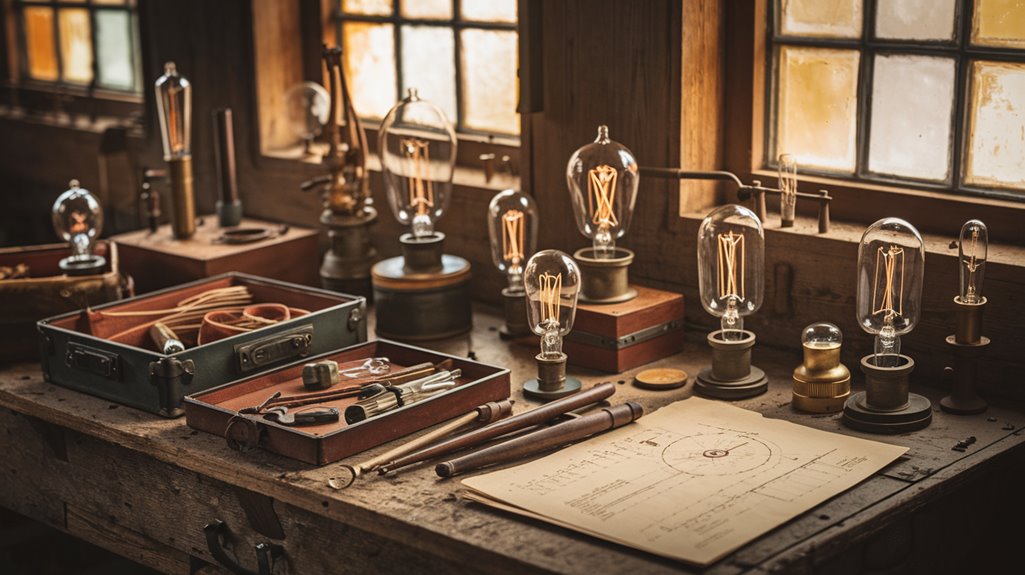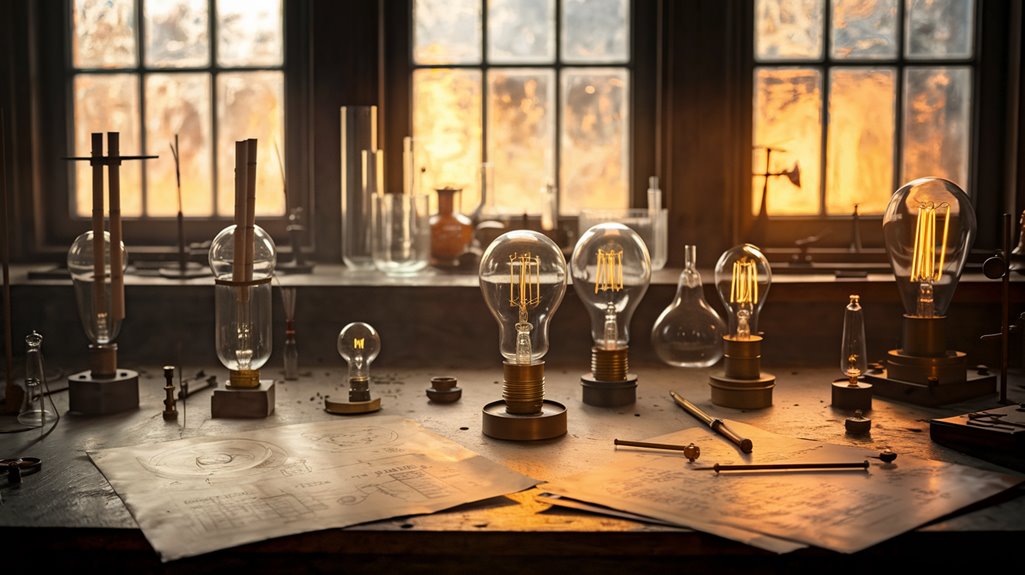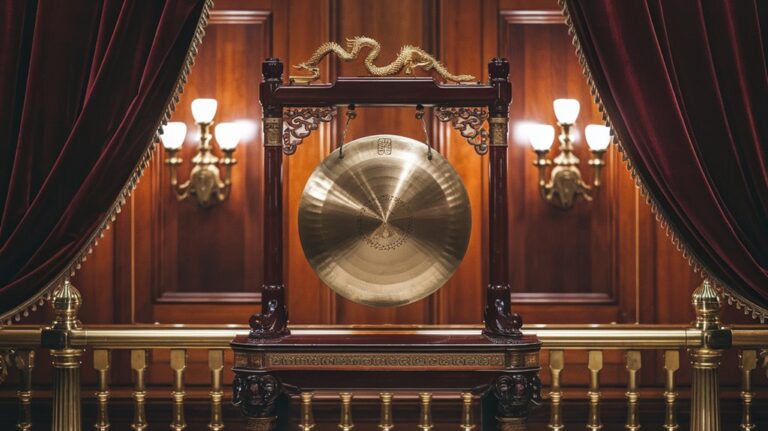Who Truly Invented the Light Bulb? The Overlooked Pioneers
You've probably heard that Thomas Edison invented the light bulb, but that's not the complete story. While Edison played a vital role, the journey to modern electric lighting involved numerous brilliant minds working across continents and decades. From Alessandro Volta's early experiments to Joseph Swan's groundbreaking designs, the true narrative reveals a fascinating web of innovation, competition, and collaboration. Let's set the record straight about who really lit up our world.
The Early Sparks of Electric Light: From Kinnersley to Davy
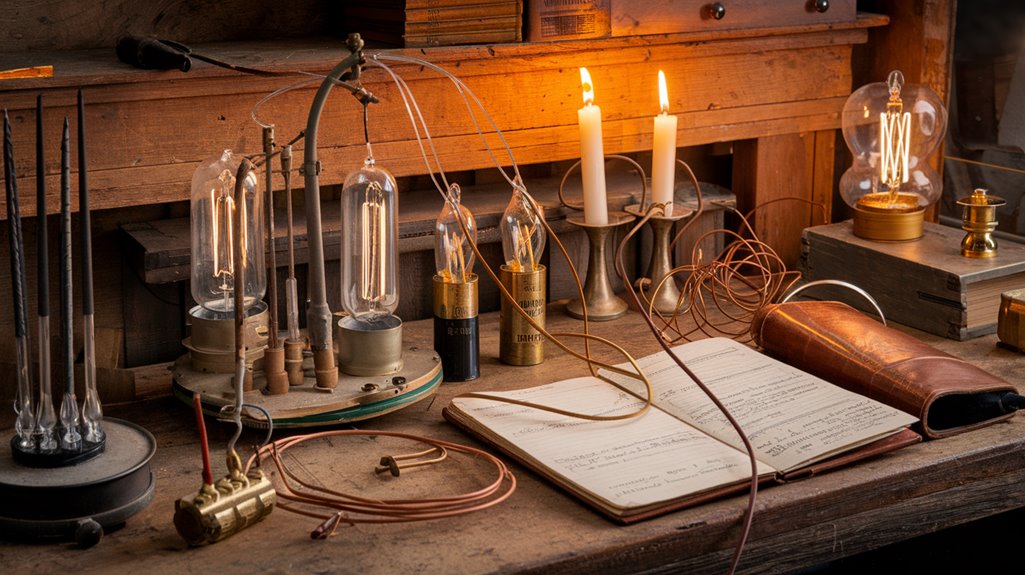
While many credit Thomas Edison with inventing the light bulb, the journey toward electric light began much earlier in the 18th century. In 1748, Ebenezer Kinnersley's experiments demonstrated electricity's flow through water, and by 1751, he was delivering groundbreaking lectures on "The Newly Discovered Electrical Fire" across America.
Working closely with Benjamin Franklin's team, Kinnersley's pioneering work helped establish fundamental principles of electrical science. Kinnersley's experiments with electrical thermometers and his distinction between glass and sulphur globe electricity laid significant groundwork.
But it wasn't until Alessandro Volta's development of the voltaic pile in 1800 that continuous electrical current became possible. This breakthrough enabled Humphry Davy's innovations in 1802, when he created the first electric arc lamp by connecting voltaic piles to charcoal electrodes. The arc lamp produced too bright light and was impractical for home lighting applications.
Though Davy's lamp burned out quickly, it produced an impressively bright arc of light, marking a pivotal moment in lighting technology's evolution.
Swan's Breakthrough: The British Pioneer's Journey
As Davy's arc lamp experiments illuminated new possibilities, Joseph Swan emerged as a key figure in the quest for practical electric light. Born in 1828, Swan's experiments with electric lighting began in 1850, leading to his groundbreaking work with carbonized paper filaments.
Despite limited formal education, his keen interest in local crafts and industries shaped his innovative mindset. After ending his schooling early, he began his career as an apprentice druggist. His successful demonstration of a working lamp to an audience in Newcastle in 1879 marked a pivotal moment in lighting history.
- By 1860, Swan had developed his first light bulb using carbonized paper in a vacuum tube.
- His early inventions faced challenges due to inefficient vacuum pumps.
- In 1883, he patented an improved filament made of extruded cellulose.
You'll find Swan's legacy extends beyond lighting – he revolutionized multiple industries, from photography to textile manufacturing.
His partnership with Edison through Edison-Swan United dominated the British lighting market, and his contributions earned him both knighthood and fellowship in the Royal Society.
Edison's Path to Illumination
Thomas Edison plunged into the quest for practical electric lighting in 1878, launching over 3,000 experiments in just two years.
His initial breakthrough came with a platinum filament in a vacuum-sealed glass bulb, but he didn't stop there. Edison's perseverance drove him to test thousands of materials for a better solution.
The game-changer arrived when he explored carbon filament options, experimenting with carbonized cotton threads and various plant materials. Working from his laboratory in Newark, he methodically tested each new material iteration. With a dedicated team of 40 researchers, he pushed the boundaries of innovation daily.
His tests with cotton threads yielded bulbs lasting over 40 hours, and further refinements with bamboo extended bulb life to an impressive 1,500 hours.
By 1879, Edison had filed his patent application, and in 1880, he received U.S. Patent #223,898.
His relentless experimentation made electric lighting commercially viable, transforming America into an industrial powerhouse.
The Edison-Swan Collaboration and Patent Wars
Edison's success with electric lighting led to unexpected legal challenges across the Atlantic. When he sued Joseph Swan for patent infringement in 1882, the tables turned dramatically. Swan won in British courts, forcing Edison into a partnership that would reshape the industry's future. Swan had already developed collodion solutions for early photographic processes, demonstrating his innovative abilities well before the light bulb.
These patent disputes resulted in the formation of the Edison & Swan United Electric Light Company (Ediswan) in 1883. Their collaborative efforts advanced electric lighting technology in ways neither could achieve alone:
- Combined their patents and resources to standardize lighting technology
- Accelerated worldwide adoption of electric lighting
- Created one of the largest light bulb manufacturers globally
You might be surprised to learn that Edison wasn't the sole inventor of the light bulb. Swan had demonstrated his working version in 1880, and the eventual partnership between these rivals proved that innovation often requires collaboration rather than competition. Swan's achievement was particularly notable as he illuminated the first house in the world with electric light in Gateshead.
Unsung Heroes: The Forgotten Contributors to Electric Light
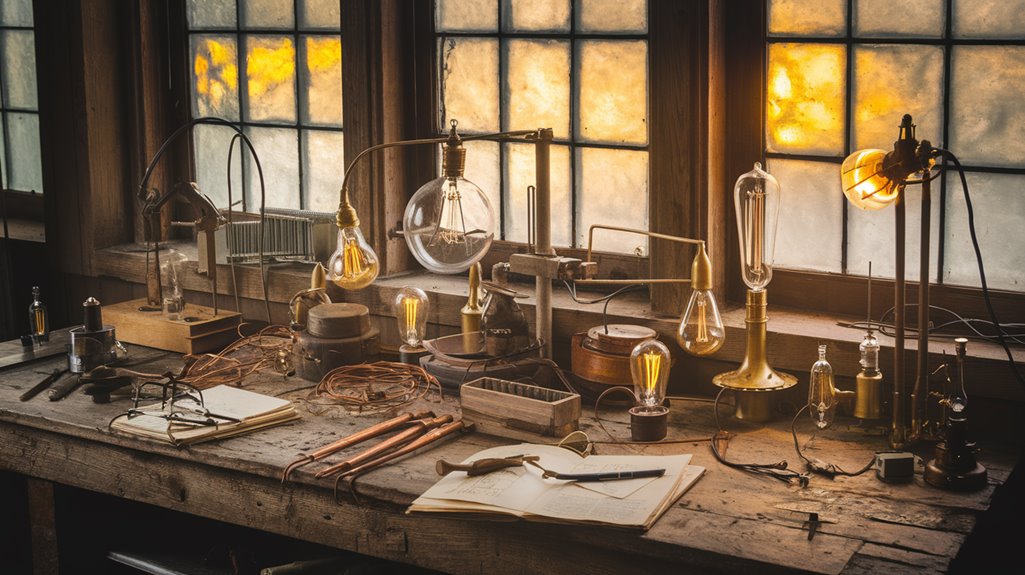
While Thomas Edison often receives the lion's share of credit for inventing the light bulb, numerous brilliant minds laid the groundwork for this revolutionary technology.
You might be surprised to learn about the hidden innovators who shaped electric evolution. Lewis Latimer, an African-American engineer, revolutionized light bulb manufacturing with his patented improvements. In 1890, he authored a practical guidebook detailing the Edison system of incandescent electric lighting.
Before him, Alessandro Volta's battery invention in 1800 and Humphry Davy's arc lamp in 1802 paved the way for future developments. Towns across America celebrated these advancements with parades and music.
Charles Brush's dynamo arc light system illuminated American cities, while Charles Steinmetz solved complex AC circuit problems.
Perhaps most significantly, Joseph Swan developed the vital cellulose filament in 1881, leading to his collaboration with Edison.
These overlooked pioneers transformed theoretical possibilities into practical realities, forever changing how we light our world.

